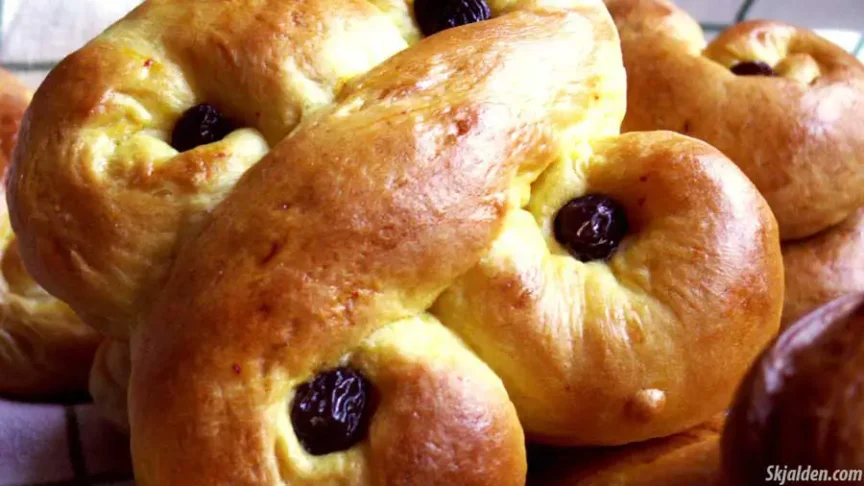The Lussekatt is a simple yet special part of Swedish winter traditions. When December rolls around in Sweden, these yellow saffron buns take center stage. But what exactly is a Lussekatt, and why do Swedes cherish it so much during the holiday season?
A Lussekatt, often called a saffron bun, is a sweet pastry made from wheat and flavored with saffron, giving it a bright yellow color. This snack is typically eaten during Advent and Christmas. While most Lussekatter have saffron, some areas in Sweden might use cardamom instead, adding a local twist to this classic treat.
Now, let’s go a bit into its background. The idea of the Lussekatt might have originated in Germany in the 1600s. Back then, there was a story about the devil appearing as a cat and giving children a hard time. In contrast, Jesus, depicted as a child, would give good children buns. The yellow saffron color in these buns aimed to scare away this ‘darkness-loving’ devil. This story, among others, came to Sweden and became part of the local culture.
Long ago in Western Sweden, people used to call these buns by names linked to the devil, like dövelskatt. But over time, the negative connotations faded, and the focus shifted to the light and joy these buns bring, especially during the Lucia celebrations, a festival of light.
Lussekatter can come in different shapes, but the most traditional one looks like an ‘S.’ People might add raisins or even pearl sugar and almonds for extra sweetness. The ‘S’ shape and other forms the buns take are not just for looks; they’re full of history, reflecting ancient designs found in Northern Europe.
What’s truly remarkable about the Lussekatt isn’t just its flavor or its color. It’s how it brings people together. In the lead-up to Christmas, families and friends gather to bake these buns, turning a simple recipe into an opportunity to connect and share stories. It’s this sense of community, combined with the rich traditions behind the Lussekatt, that makes it more than just a treat. It’s a symbol of warmth, of history, and of the light that shines during the darkest time of the year.
So, when we talk about the Lussekatt, we’re not just talking about a bun. We’re talking about a piece of Swedish heritage, a reminder of the light in winter, and a reason for people to come together and celebrate. Whether you’re enjoying one with a cup of coffee on a frosty morning or sharing them with loved ones, each Lussekatt is a little piece of Swedish Christmas, wrapped up in dough and tradition.
Photo credit: Matmamman
